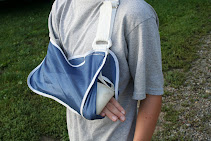For children, Christmas is not Christmas, if they don’t receive any toys.
But in its 24th annual Trouble in Toyland report, the U.S. Public Interest Research Group (PIRG) has warned holiday shoppers to avoid dangerous toys, namely those with small parts, make loud sounds, made of soft plastics and have lead contamination.
Aside from toxic toys which contain excessive levels of lead, the PIRG is locking down on toys with small parts that can choke children younger than 3-years-old. According to the PIRG, choking is the number one cause of toy-related deaths and injuries and there are a lot of toys which just barely meet the federal standards on small parts.
A good indicator for potential small parts choking hazard is if a toy can fit into a toilet paper tube then it is too small for children under three.
Two toy hazards the group also focused on are toys which make loud sounds and soft plastic toys which may contain a chemical called phthalates.
The report found that 15 percent of children between 6 and 17 years old showed signs of hearing loss. Phthalates, which is widely used to make plastic products softer and can adversely affect children’s health, was recently found in a child’s lunch bag and a purse.
The Toy Industry Association in response to the report said that, "Consumers have every reason to trust the safety of the three billion toys sold in America each year."
In case you’re working on your Christmas list, the PIRG is advising to check for toy safety at http://toysafety.mobi through your mobile phones before buying gifts for kids.
Who knew that something as seemingly insignificant as a toy can be so dangerous to a child? But indeed, toys today have proven to be both fun and fatal, with most of their defects hidden and latent.
Under the product liability law, manufacturers, distributors, and suppliers may be held liable for manufacturing defects if consumers or children are hurt because of toy errors made in the manufacturing process and those with poor-quality materials or shoddy worksmanship.
While parents have a legal recourse should the toys hurt their kids, it’s always best to put safety first and choose your gifts wisely.
But in its 24th annual Trouble in Toyland report, the U.S. Public Interest Research Group (PIRG) has warned holiday shoppers to avoid dangerous toys, namely those with small parts, make loud sounds, made of soft plastics and have lead contamination.
Aside from toxic toys which contain excessive levels of lead, the PIRG is locking down on toys with small parts that can choke children younger than 3-years-old. According to the PIRG, choking is the number one cause of toy-related deaths and injuries and there are a lot of toys which just barely meet the federal standards on small parts.
A good indicator for potential small parts choking hazard is if a toy can fit into a toilet paper tube then it is too small for children under three.
Two toy hazards the group also focused on are toys which make loud sounds and soft plastic toys which may contain a chemical called phthalates.
The report found that 15 percent of children between 6 and 17 years old showed signs of hearing loss. Phthalates, which is widely used to make plastic products softer and can adversely affect children’s health, was recently found in a child’s lunch bag and a purse.
The Toy Industry Association in response to the report said that, "Consumers have every reason to trust the safety of the three billion toys sold in America each year."
In case you’re working on your Christmas list, the PIRG is advising to check for toy safety at http://toysafety.mobi through your mobile phones before buying gifts for kids.
Who knew that something as seemingly insignificant as a toy can be so dangerous to a child? But indeed, toys today have proven to be both fun and fatal, with most of their defects hidden and latent.
Under the product liability law, manufacturers, distributors, and suppliers may be held liable for manufacturing defects if consumers or children are hurt because of toy errors made in the manufacturing process and those with poor-quality materials or shoddy worksmanship.
While parents have a legal recourse should the toys hurt their kids, it’s always best to put safety first and choose your gifts wisely.






